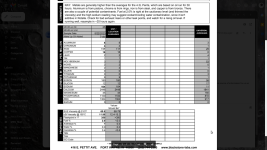Clear water hose test is best done in the water, because with the muffs water can be mixed with air which will throw off your test results.
Before you changed your old exhaust, were there rust trails? If so, it is possible that it could be left over from then, if you were getting a bit of salt water in with the old exhaust. Sampling from the bottom of the dipstick tube, or the oil filter, I have done it both ways and not much difference, and Blackstone says that on their website. So I do think your high iron, Alu and copper are something you want to address, depending on how long you want to keep the boat, if you want to try to keep this engine going, or replace it with a reman (no new 4.3s anymore

wish I could still get one when the time comes). These engines are simple, tough and can take a beating, and be brought back with inexpensive parts.
If you find a rotted intake, that can be done for a few hundred, and an afternoon of work. If you find bubbles in the cooling water, then you got the big job to do, honestly it isn't that bad, it took me a while because I had to learn a few new skills along the way. You have to find a way to keep everything organized, labelled and clean clean clean.
The only way I can think of to reduce the chance of condensation in the exhaust with all the trolling you do, is to look into converting to a Mercruiser warm manifolds system but even then, many unknowns and extra cost, seeing as how you just replaced with Volvo. I don't do a lot of trolling but I do some, and it hasn't been a problem for me.
If you wind up finding leaky head gaskets, well I can offer advice on how to proceed.
I went from this:

to this:

and:

with new OMC/Volvo style center riser exhaust, I used Barr aftermarket manifolds and elbows and VP alu 90* exhaust pipes and rubber hoses...

It all fit like factory on my old OMC Y pipe. Which makes sense because OMC designed this exhaust before the joint venture with Volvo, and Volvo used the same thing all the way up to the latest models with cat converters.
Approx $2000 in parts for everything. Engine still runs great 6 years later.

























